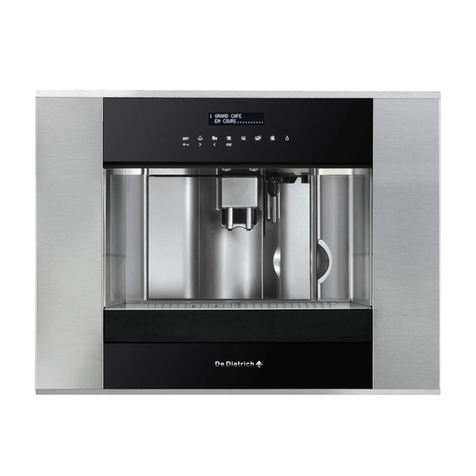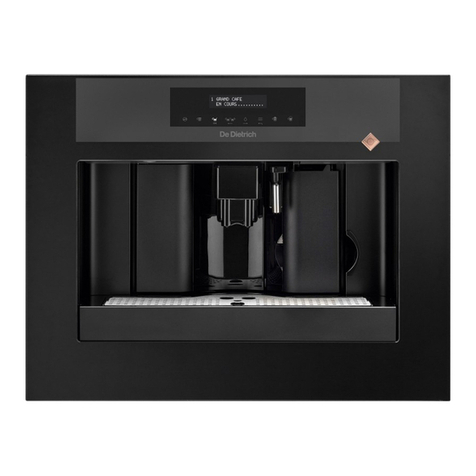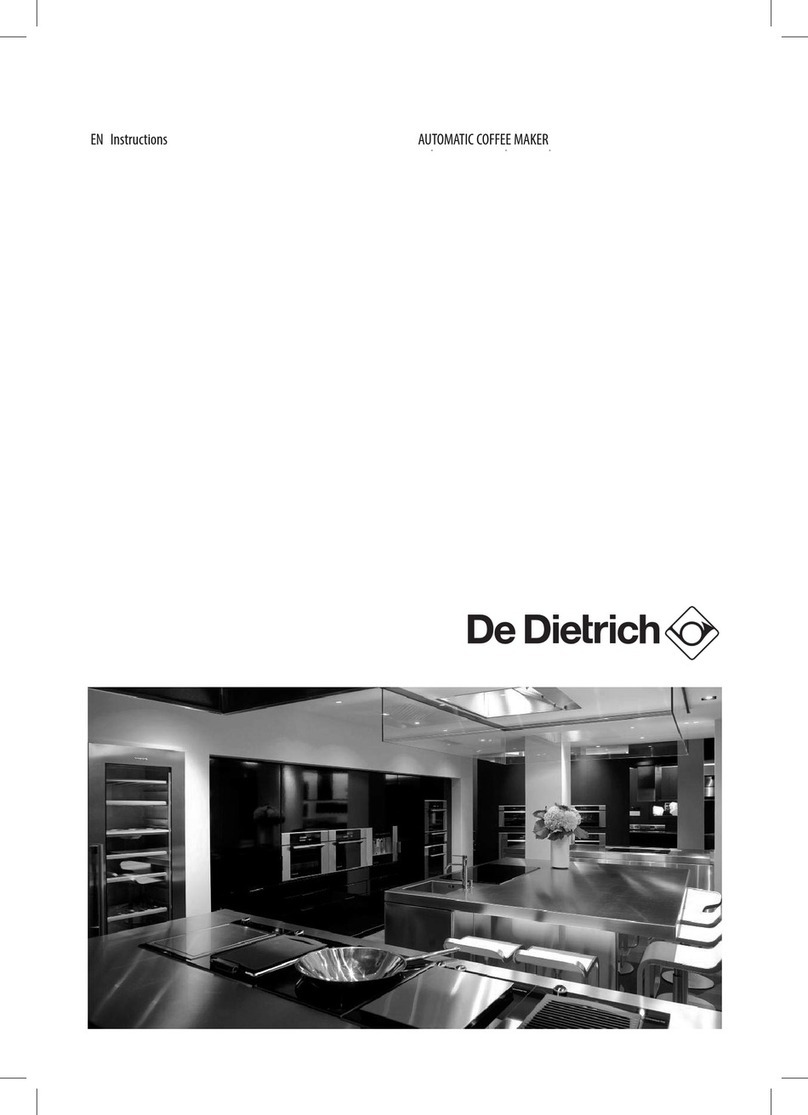
9
3.1 Programming by the user
D On the main page press on the MENU key to access the
programming pages
Press the OK key to go to ENERGY SAVING mode and reduce
power consumption. Press OK to restart the machine
The machine automatically eliminates water remaining in the
internal piping immediately after the heating phase so that only
fresh water is used to make the coffee
This function is used to choose the message display language.
This function is used to set the contrast in order to be able to
view the instructions clearly
The hardness of the water used to make the drinks varies from
region to region. This is why the machine should be set to the
correct degree of hardness for the water being used
This function is used to check the water filter (if one is used) by
warning the user when replacement is needed. The
“REINITIALISE” command should be used every time a new filter
is fitted.
This function is used to make warmer or hotter coffee by setting
water temperature (high, medium and low)
This function is used to set the dose of coffee (quantity) to grind
when making an expresso (strong, regular, weak)
This function is used to set the dose of coffee (quantity) to grind
when making a coffee (strong, regular, weak)
This function is used to set the dose of coffee (quantity) to grind
when making a large coffee (strong, regular, weak)
The pre-humidifer process increases the coffee aroma thus giving
the coffee an excellent taste. This function is used to humidify
the coffee before preparing it.
Select product
Machine ready
Energy savings À
Rince
Rince À
Language
Language À
Contrast
Contrast À
Water hardness
Water Hardness À
Water filter
Water filter À
Temperature
Temperature À
Expresso aroma
Expresso aroma À
Coffee aroma
Coffee aroma À
Large coffee aroma
Large coffee aroma À
Pre-humidifier
Pre-humidifier À
Total coffees
































